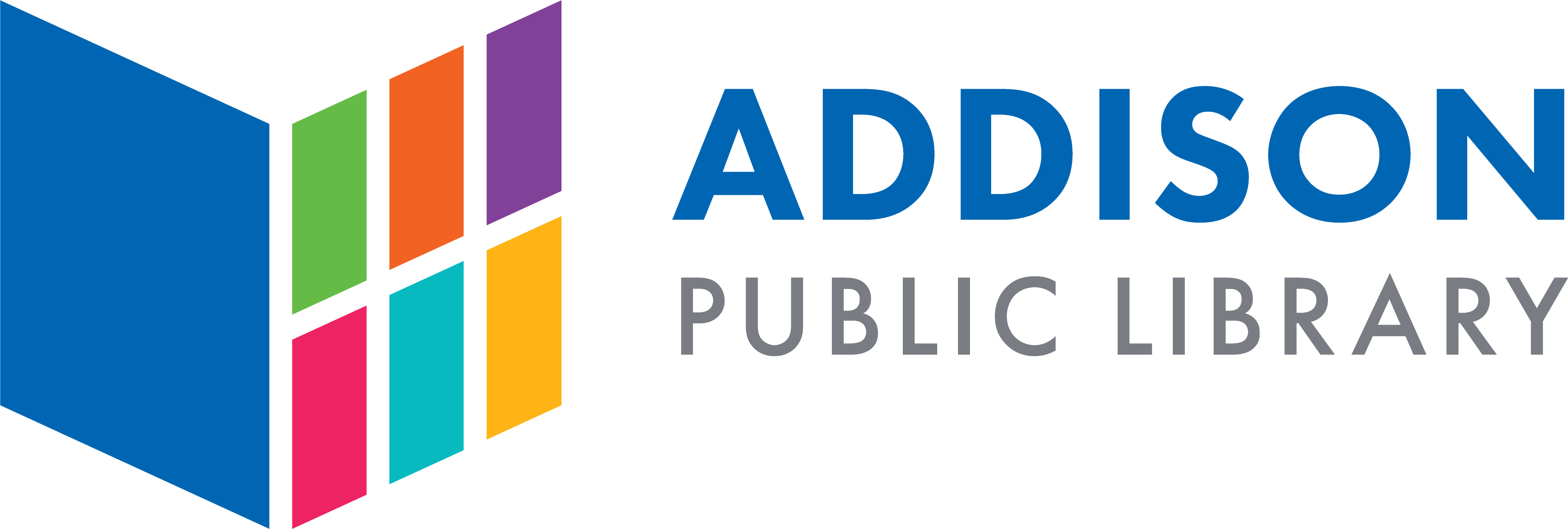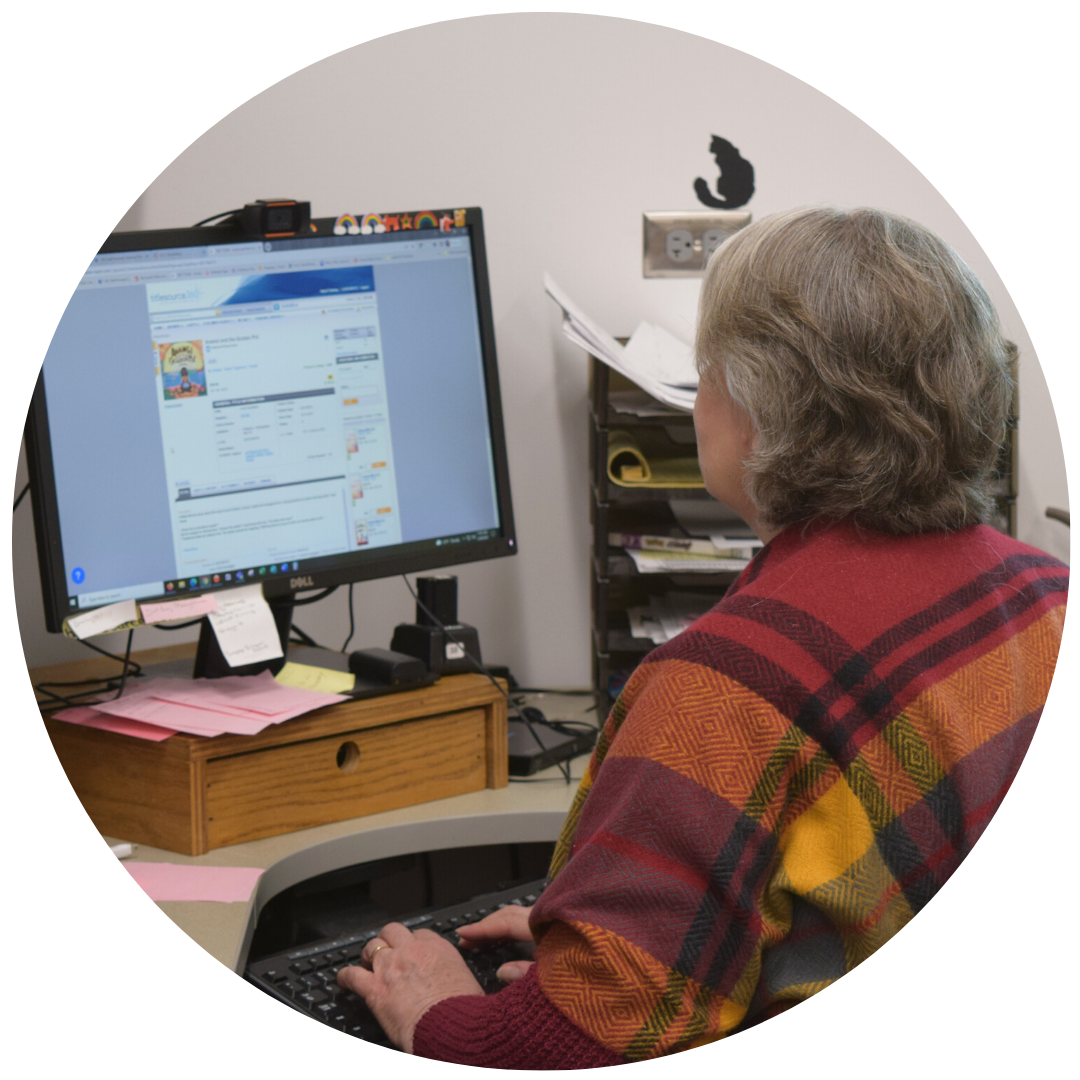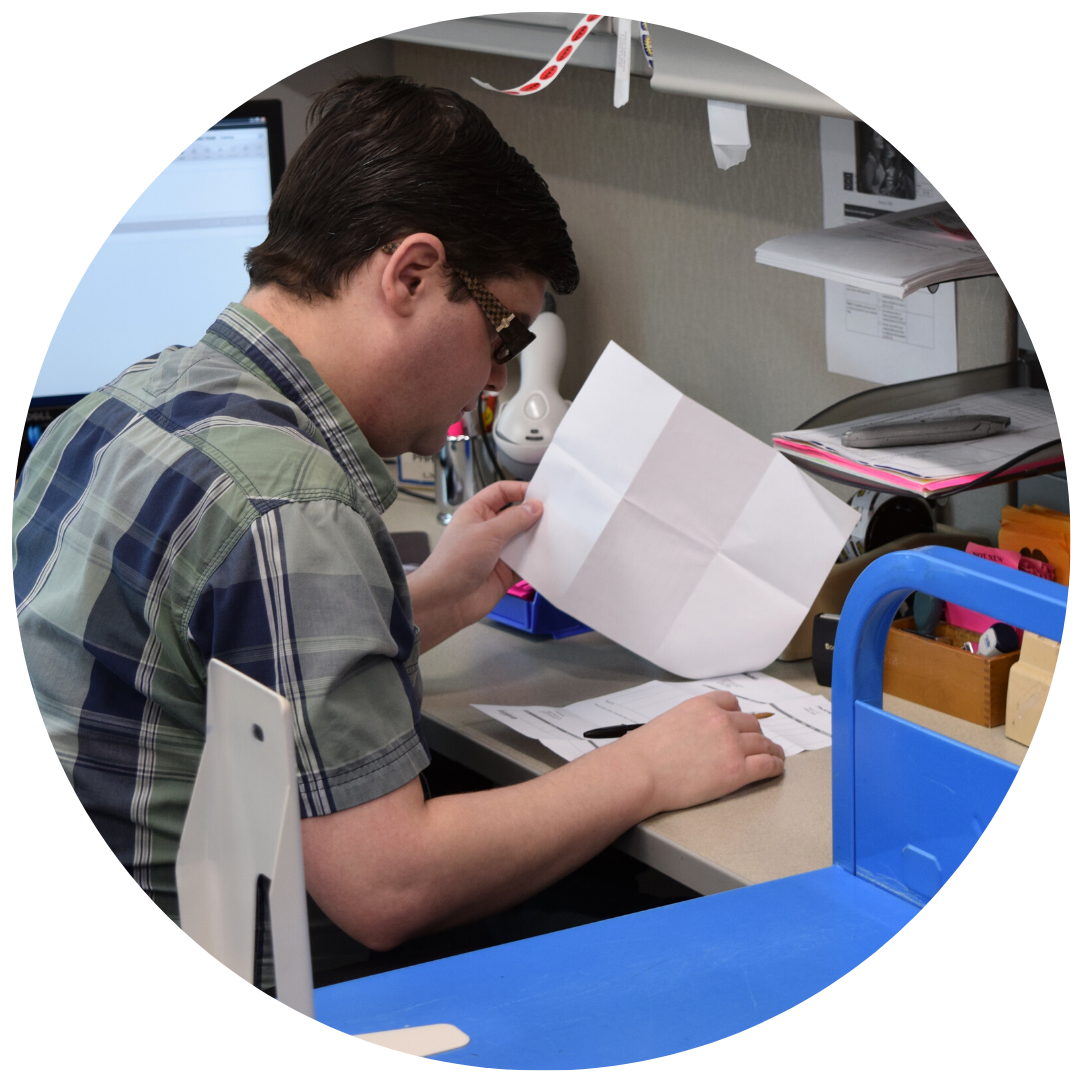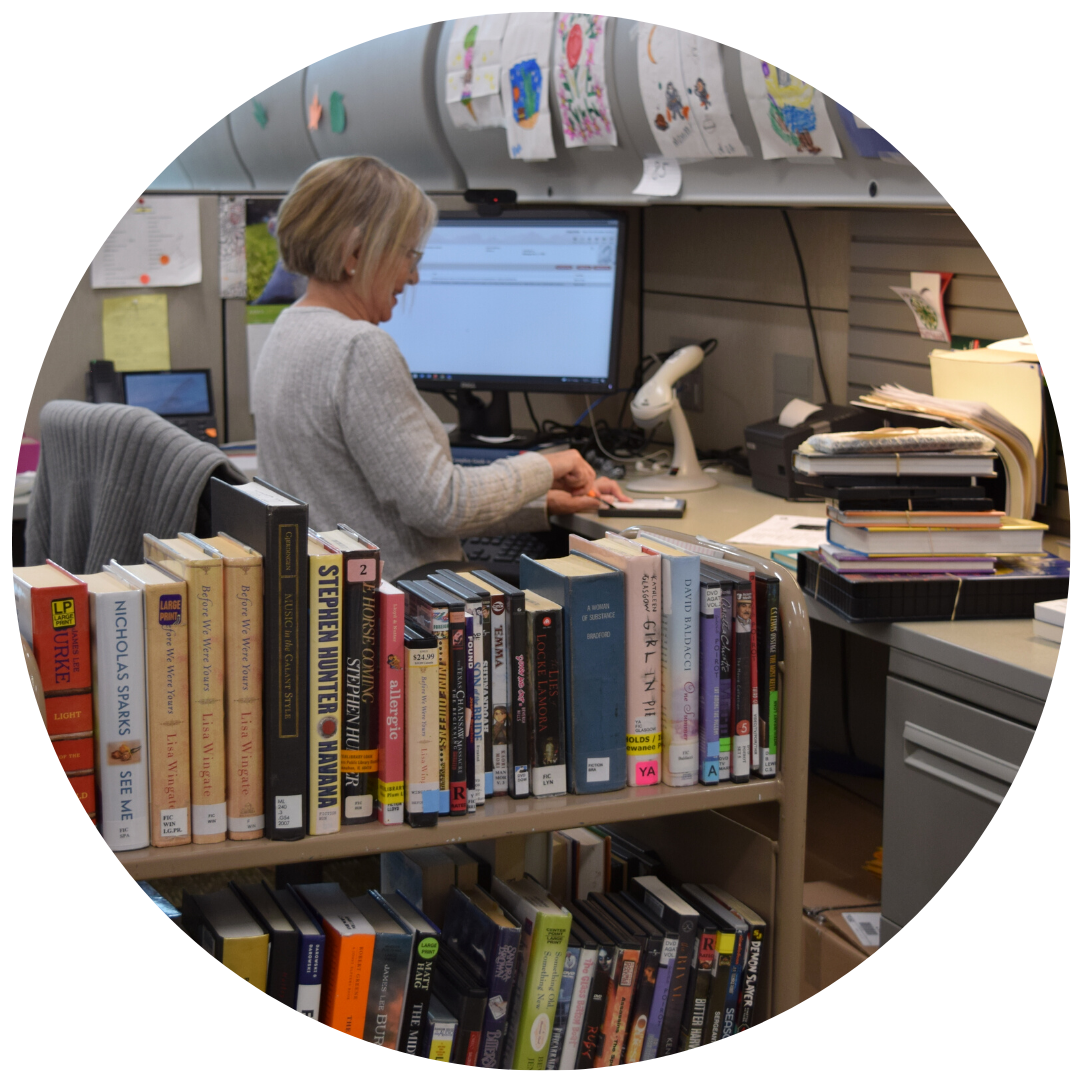by Emily Glimco, Communications & Marketing Coordinator, March 2022
You already know that library shelves are filled with books, movies, and more. But do you know how those items get into the library’s collection for patrons to take home? Our Materials Management department works behind the scenes to bring the best materials to our shelves for Addison Public Library cardholders to borrow! Here’s how it works:
Step #1: Choosing and Ordering New Items
The Collection Development team is in charge of selecting new items to add to the library’s collection. Each staff member on this 3-person team oversees one area of the collection. Collection Development Specialist Sue Eilers, for example, focuses on selecting materials for our children and teen collections as well as DVDs and video games. Like the rest of her team, Eilers chooses which materials to order by using professional reviews, watching past circulation trends, and using our Collection Development policy as her guides.
“I enjoy seeing all the new things that are available, and then having the opportunity to bring those exciting new things to our community,” said Eilers, who has worked for the library for over two decades and has worked on the Collection Development team since 2015.
Once the Collection Development team chooses what they want to add to the collection, Acquisition Clerk Mary Ho takes over. Ho has been working at the library for nearly 25 years and says she enjoys the quiet nature of the job, even when work picks up before the close of the fiscal year on April 30 each year. Ho places all the orders for items that go into the library’s collection, working with large and small vendors alike across the country to find the right materials.
Step #2: Getting Items Ready for Patrons
Once items have arrived in the building, it’s time to get them ready to enter the collection. Materials Management Clerk Steven Krage handles receiving new items, and there are always a lot of new items to manage. Last year, we added over 23,000 physical items to the collection.
“It’s important to be organized,” said Krage. “Being organized is the only way you can get through the volume of materials we have.”
Cataloging each new item is the next step. Every time the library has a new item for the collection, catalogers Sharon Sippy and Erika Johnsrud update the library’s online catalog so patrons can find the new materials. Sippy catalogs all adult and children’s print materials for the library; Johnsrud handles all multimedia items, kits, games, and World Language materials. Sippy and Johnsrud agree that the best part of cataloging is seeing everything new as it comes in and making items discoverable for library patrons.
After items are cataloged, the final step is to process the item. Materials Management Clerk Michelle Stano explained that processing includes things like “making protective covers for items, putting labels on, making sure barcodes on every piece of a kit match, and programming RFID tags.”
Step #3: Shelving Items
Once library items have been fully processed and are ready to go on the shelf, our team of Shelving Clerks works together to put materials on shelves so patrons can check them out. Shelving Clerk Joyce Cordo explained that while each day is different, she and the other Shelving Clerks usually start their day in the Guest Services department to pick up recently returned items that need to go back on the shelf.
“I like being able to help keep things in order, and I enjoy working hands-on with library materials,” said Cordo.
When they are not shelving library materials, Shelving Clerks work on projects like shifting books from one area of the shelves to another to make room for new items and removing materials from the library’s collection. The process of taking items out of the collection is called weeding, which is overseen by the Collection Development team. Items are removed from the collection when they become dated, worn, or are no longer in demand. Eilers explained that weeding “helps people find the things they want and makes room for new things,” which ultimately helps the library be as usable and relevant to the community as possible.
Some withdrawn items are offered to other libraries or are donated to Thriftbooks for resale or recycling. And even when books are removed from the Addison Public Library’s collection, patrons still have a way to search for items they want.
Bonus: Borrowing from Other Libraries
Did you know that you can use your Addison Public Library card to try to find the item you want through other libraries? Borrowing items from other libraries is called interlibrary loan, and Interlibrary Loan Clerk Marilyn Williams is the staff member who makes it happen.
“If a patron can’t get an item here, we search for that item for them, both out-of-state and in-state,” said Williams. “I’m responsible for keeping records of items Addison cardholders borrow from other libraries and making sure those items get to our patrons.”
Requests are made through the library’s online catalog, on the library’s website, or simply by calling the library and making a request over the phone. The library can access both state and national resources to find materials for patrons.
Interlibrary loan goes both ways: Addison cardholders can borrow from other libraries, and cardholders from other libraries can borrow from Addison’s collection, too.
“We share with other libraries, just like they share with us,” Williams said.
- - - -
To learn more about the library’s Collection Development process, you can review our Material Selection policy on our website. You may also contact Barbara Doerries, Head of Materials Management or Karen Dini, Collection Development Coordinator with any questions.




